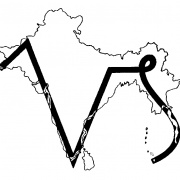₹825.00
Volume 4 of The New Way is a series of twenty essays written by Patrizia Norelli-Bachelet (Thea) between the years 1989 and 1994. They were originally published in The Vishaal Newsletter (TVN) under the title, Culture and Cosmos .
‘I was writing as if standing at the centre of the circle of life, from the centre that is India, bear in mind. Thus all the experiences I write about are FROM THE CENTRE THAT IS INDIA.’

